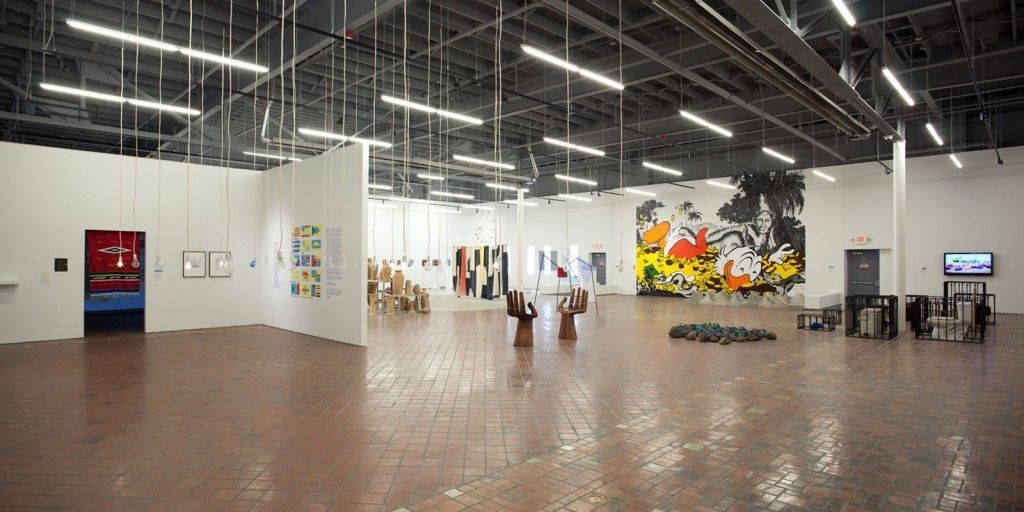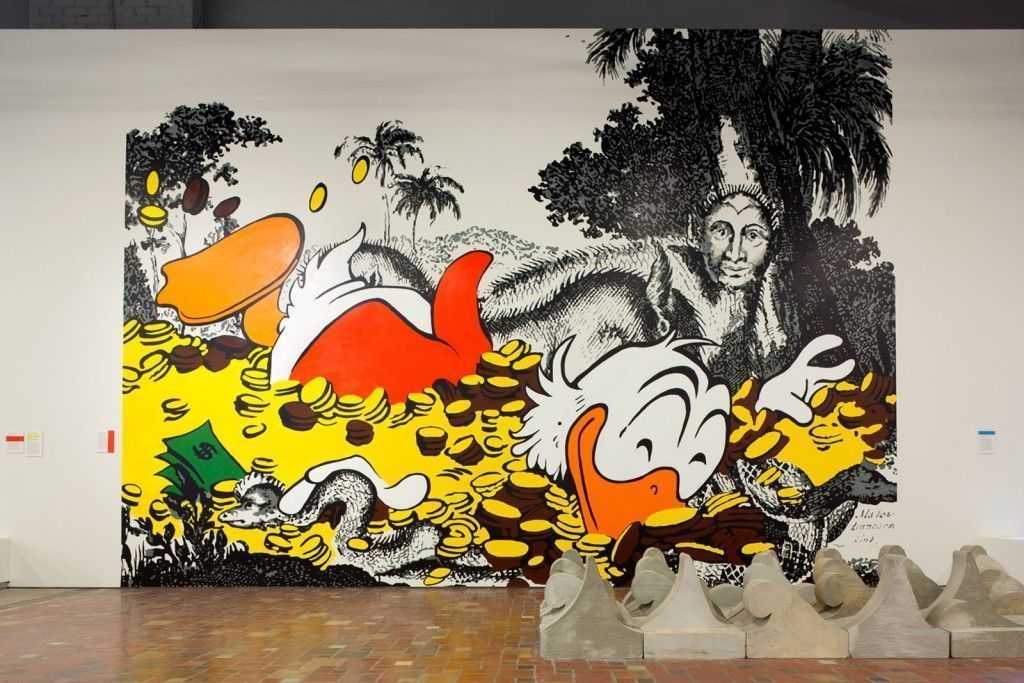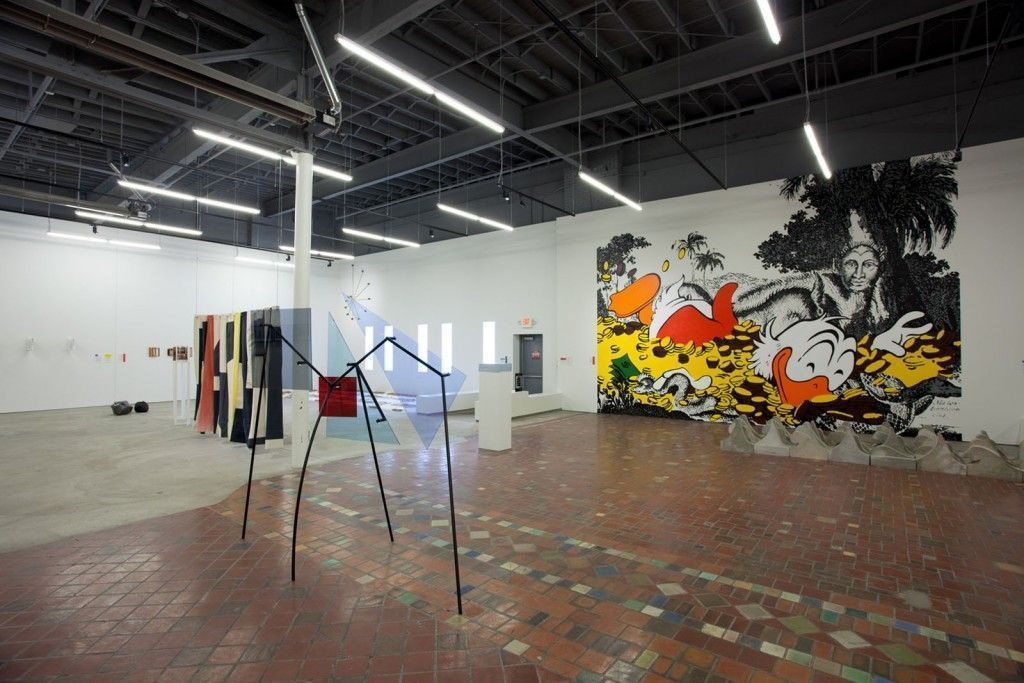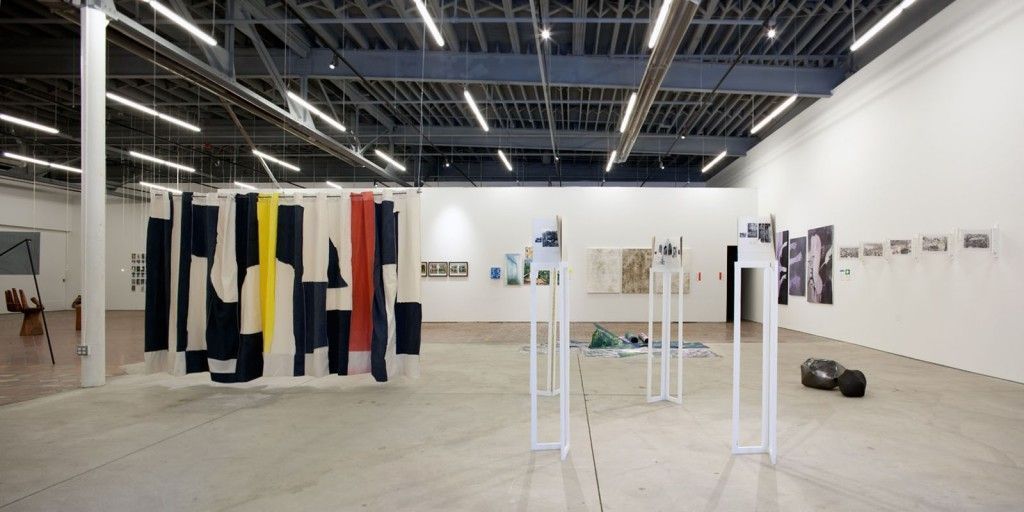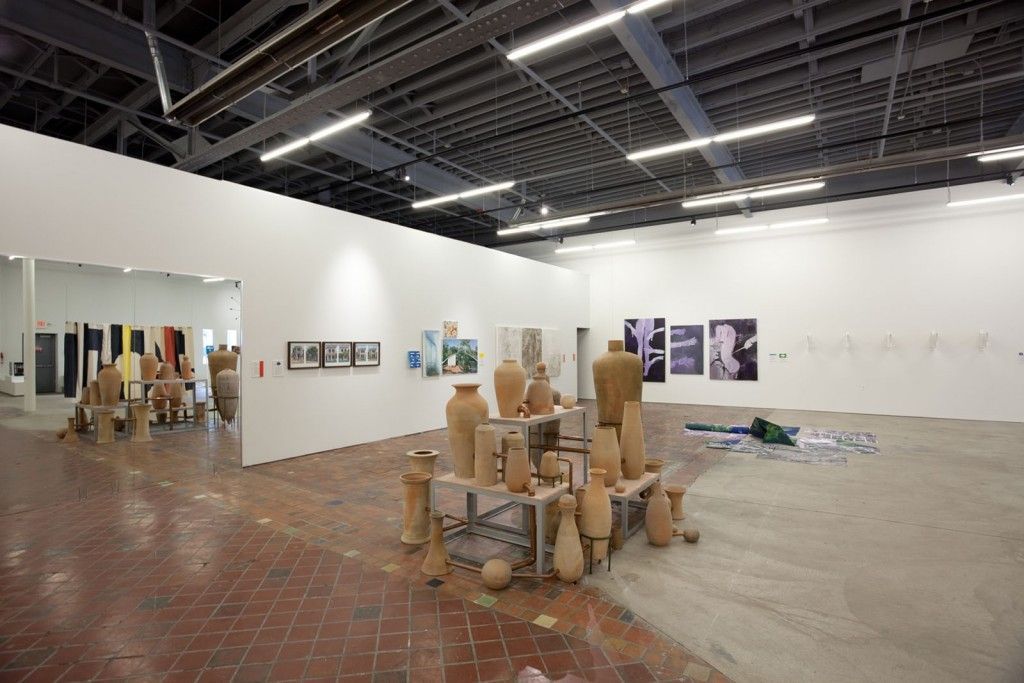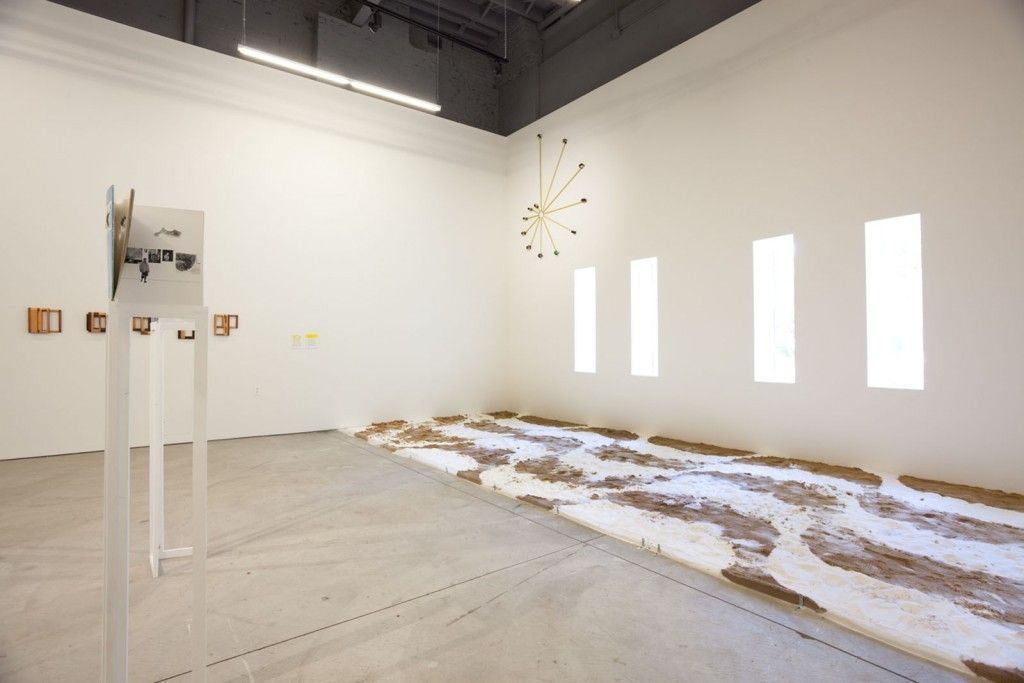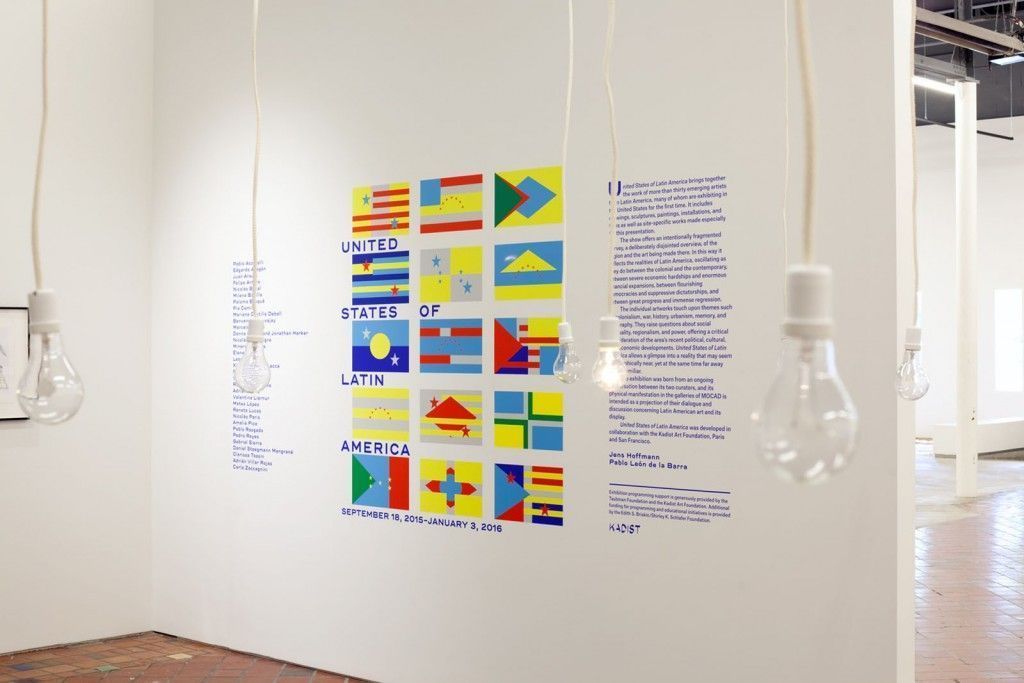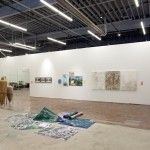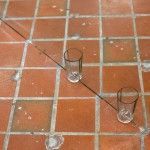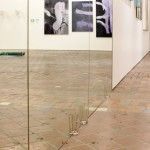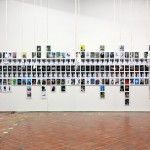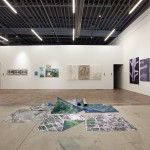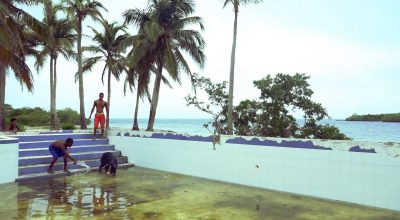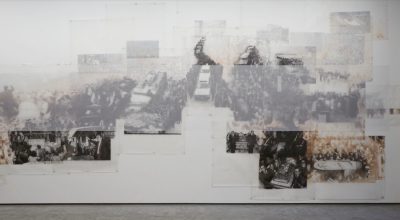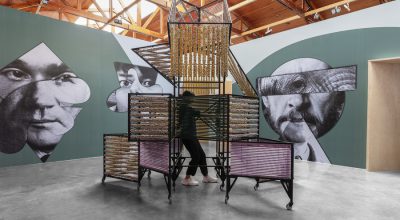
United States of Latin America:a Conversation
The exhibition United States of Latin America at the Museum of Contemporary Art Detroit (MOCAD) brings together more than thirty emerging artists from Latin America, many of whom are exhibiting in the United States for the first time. The show is based on an ongoing conversation between two curators, Jens Hoffmann, MOCAD senior curator at large, and Pablo León de la Barra, guest curator, who, for a number of years have exchanged research and information about artists, artworks, and the overall development of the art world from Mexico to Argentina and the many countries in between. The exhibition is an extension of this dialogue into the galleries of the Museum of Contemporary Art Detroit via artworks suggested in dialogue format.
Developed in collaboration with Kadist Art Foundation, United States of Latin America features a wide range of works in a variety of mediums. The individual artworks touch upon themes such as geography, history, urbanism, memory, colonialism, architecture, war, modernism, social inequality, regionalism, and power. Given how Latin America’s realities oscillate between the colonial and the contemporary, between severe economic hardships and enormous financial expansions, between flourishing democracies and suppressive dictatorships, and between great progress and immense regression, the exhibition presents an intentionally fragmented survey, a deliberately disjointed overview, of the region and the art being made there. It allows the viewer a glimpse into a reality that may seem geographically near, but is in many ways far away and unfamiliar.
Participating artists include Pablo Accinelli, Edgardo Aragón, Juan Araujo, Felipe Arturo, Nicolás Bacal, Milena Bonilla, Paloma Bosquê, Pia Camil, Mariana Castillo Deball, Benvenuto Chavajay, Marcelo Cidade, Donna Conlon and Jonathan Harker, Nicolás Consuegra, Minerva Cuevas, Elena Damiani, Leonardo Engel, Ximena Garrido- Lecca, Federico Herrero, Voluspa Jarpa, Runo Lagomarsino, Adriana Lara, Valentina Liernur, Mateo López, Renata Lucas, Nicolás Paris, Amalia Pica, Pablo Rasgado, Pedro Reyes, Gabriel Sierra, Daniel Steegmann Mangrané, Clarissa Tossin, Adrián Villar Rojas, and Carla Zaccagnini.
The curators invited a number of writers and curators from throughout Latin America to contribute to a glossary of terms that articulate the region’s historical landscape and conceptual syntax. This glossary is published in the exhibition catalogue along with a conversation between the curators, texts on all of the artists, images of the exhibited artworks, and a roundtable discussion featuring a number of curators based in Latin America.
WHAT’S IN A TITLE?
JENS HOFFMANN AND PABLO LEÓN DE LA BARRA IN CONVERSATION
Jens Hoffmann: United States of Latin America, the title we’ve chosen for the exhibition we are co-curating at the Museum of Contemporary Art Detroit, emerged from a conversation during one of our visits to Detroit. We were speaking about the show you had just curated for the Guggenheim in New York, entitled Under the Same Sun: Art From Latin America Today. That show was not unlike ours here—both are survey exhibitions of artworks made in Latin America over the last handful of years. How did that show come about?
Pablo León de la Barra: In 2013 I was invited by the Guggenheim Museum to be the curator for Latin America of the UBS MAP project. I was an unusual candidate, in that I did not come from a traditional museum background. What I did have was more than a decade of experience working independently, researching and doing exhibitions in the Latin American context, and thus a lot of practical expertise and knowledge. The project was intense and had very specific goals to be achieved in a very tight timeframe, so they needed someone who already had some of this background.
Nevertheless, during the first year I made time to undertake research travel through most of the continent in order to engage with the artists and art scenes and identify contemporary works to be purchased with UBS funds and incorporated into the Guggenheim’s collection. In a year, I traveled almost as much as I had in the entire previous decade, and this gave me immediate knowledge of the concerns and the artistic realities of the contemporary art scenes. I remembered the series of essays you wrote for Purple magazine in the early 2000s about your research and travels through Latin America, which was very inspiring to me at the time.
The second part of the project consisted of doing an exhibition with the works purchased, which was the show you saw in New York.
JH: In that show, there were a significant number of historical pieces with political undertones that formed a conceptual foundation for the works made by some of the younger artists. I thought the whole presentation was extremely successful in interconnecting artists from a number of generations who are not well known to New York or the United States audiences. It seems like only a dozen or so Latin American artists have any form of name recognition in the U.S. art world. The countries most explored are Mexico and Brazil, and more recently Colombia and Argentina. Central America is almost entirely missing from the map, and in the Caribbean, Cuba is the only place most curators travel to.
PLB: The exact thing I tried to do with the Guggenheim project was to expand this list of artists and places, and go deep into the regions that we as an international art community know less about, for instance the Dominican Republic, Ecuador, Bolivia, and Paraguay. As you said, when people talk about Latin America today, their knowledge refers to aspects of Brazil and Mexico, which we could say are the big players. Exhibitions from Latin America normally consist of artists representing seven or eight of the better-known countries, with those from the rest of the continent (including Latin American artists living in the United States) being ignored as if none of them existed. I had already done lots of work in Puerto Rico and Central America, so I certainly wanted to include artists from those regions.
Of course I was not interested in filling quotas, but about engaging with artists.
JH: In my opinion, exhibitions that are based on certain regions or revolve around particular geographies can be a bit fraught. On the one hand, they are very popular with museums and audiences. People like exploring art from elsewhere in the world, and those geographically based exhibitions offer nice, bite-size intros. Institutions like them because it demonstrates that they are part of a global conversation. Yet this typology only allows for a snapshot of a certain scene, and there is the danger of missing out on a more nuanced and subtle investigation. While I welcome an introduction to an art scene from another city, country, or continent, I am also worried about generalizations and cultural stereotypes. There is of course a big difference between doing an overview exhibition about Latin America or Africa, for example, and doing one about just one country or one city there.
There is perhaps another issue with an exhibition such as ours. It might seem as if we are trying to correct people’s understanding of the development of art, to revise an established canon—something that neither you nor I are in fact particularly interested in doing. I am talking about a form of revisionism that has been very popular in major museums since around 1990, to transform our understanding of art and its development on a global scale. I am very ambivalent about this. I think it is crucial to expose audiences to art that offers alternative ways of understanding the reality we live in. I am interested in artists who complicate and disrupt established narratives and canons, either because their aesthetics are not what is expected or because the content has not received attention. At the same time, all of this also leads to us hold onto those canons because we position ourselves in relationship to them.
PLB: I agree with a lot of the arguments you make, and perceive the need to be nuanced about all of this. I see the title of our exhibition in Detroit also as a continuation of titles in which you have explored geographies in the Americas, for instance your exhibition Americana (2007–12) at the Wattis Institute for Contemporary Arts in San Francisco, which for fifty months presented sequential exhibitions about each of the fifty United States, or Panamericana (2010) at kurimanzutto in Mexico City, in which you illustrated connections among works by artists from different places in Latin America. Both of those exhibitions looked beyond geographies and stereotypes to focus on unique artistic practices.
JH: Yes, I have long been interested in exploring certain geographies, but those two exhibitions were extremely different from each other. Americana had an almost anthropological objective, and was trying to examine how historical events in the United States’ past still shape the way we experience the country today. Panamericana was the result of a number of research trips I did in Latin America between 2008 and 2010, during which I was meeting with hundreds of artists from San Juan to Caracas, San Salvador to Bogotá, Mexico City to São Paulo. I wanted to do a group show featuring a younger generation of artists from these places who did not know about one another’s work and had not exhibited much outside their home countries. It was about creating a platform for artists who I thought were engaged in a dialogue without even being aware of it.
PLB: That relates to what we are doing in Detroit: creating a platform to make visible not only a generation of artists coming from Latin America, but also a dialogue among their practices. I also appreciated the title of that kurimanzutto exhibition. It touches on something that creates a resistance among some in Latin America: the term “Pan America” as it was used by the United States as part of the Monroe Doctrine, a plan to economically and politically control the two continents. This of course had its failures, one obvious one being the unfinished Pan-American Highway, which was supposed to connect the Americas from north to south, or the disappearance of Pan-Am airlines in 1991, a U.S. airline that aimed to connect the Americas.
JH: I was referring to the idea of pan-Americanism as it developed in Latin America after the independence of the United States from England. There was a desire for unity among the Latin American nations, particularly the countries in South America. I think that our title United States of Latin America is perhaps connected to that. I see it as a longing for independence and unity among the Latin American countries—an economic, political, and cultural independence from the North of the continent that would be made possible by a closer relationship among the states of Central and South America. As you know, from 1821 to 1841, the Central American countries were in fact united as the Federal Republic of Central America. Or think about Simón Bolívar’s Gran Colombia (1819–31), which was a short-lived union of Colombia, Venezuela, Ecuador, parts of Brazil, and Guyana.
Our title is a humorous play with words and geopolitical concepts that complicates the question of a geographically based art exhibition in the same way that we contest what the geography we are looking at is actually called. It makes me think of Joaquín Torres García’s famous drawing of an upside-down map of Latin America, América Invertida (1943), with the southern tip of South America pictured at the very top of the Earth. This artwork, more than any other, speaks of Latin America’s longing for and efforts toward emancipation, recognition, and a unique cultural identity.
PLB: I’m thinking of that 2010 book by Oscar Guardiola-Rivera titled What if Latin America Ruled the World? The title is a humorous pun on turning the economic and political logic of the world upside down. Unfortunately, because of North America’s politics of neocolonialism and its aggressive economic expansion in the nineteenth and twentieth centuries, the relationship between Latin America and its northern neighbor, the United Sates of America, has never been an easy one. It is a relationship of dependency and antagonism that can be very schizophrenic. There has always been animosity toward the United States’ political and economic interventions, yet there has also always been a desire to emulate its consumer-driven lifestyle.
The United States’ hijacking of the name of the continent to name its country is very controversial among all the other inhabitants of the American continent who are also “Americans.” During the exhibition at the Guggenheim last year I invited Alfredo Jaar to remake his iconic artwork This Is Not America (1987) in Times Square. The work talks about this specific issue, which persists today.
As you mentioned about pan-Americanism, there were many attempts for Latin America to exist as one country after independence from Spain and Portugal. You mentioned Bolívar’s dream of a country formed by the union of many of the countries that used to belong to Spanish America. The name of Colombia existed before the nation we now know as Colombia (or, as U.S. Americans say, “Columbia”), and was an attempt to name the continent after Columbus, its “discoverer,” in this way also contesting the naming of the continent after Amerigo Vespucci, who was the first to realize that it was not West India as Columbus had thought but a new, “unknown” piece of land.
Ironically, after independence from Spain and Portugal, many countries of the continent named and modeled themselves after the United States’ federative model, democratically constructed by the sum of different states. Mexico’s official name, for example, is the Estados Unidos Mexicanos (United Mexican States). Brazil between 1889 and 1968 had the official name Estados Unidos do Brasil (United States of Brazil) and for a moment even had a flag with yellow and green stripes similar to the flag of the United States.
JH: Speaking of Latin American flags: several countries, for example Cuba, Costa Rica, and Chile, have flags that resemble the flag of Texas, which was annexed from Mexico by the United States in 1845. The cover of this publication features an artwork by the Venezuelan artist Luis Romero, which is a flag made of symbols found on the different flags of the countries of the Americas, the new flag becoming the flag for our United States of Latin America exhibition.
PLB: The use of the European term Latin in “Latin America” raises questions of representation—fundamentally the lack of representation of the indigenous and black inhabitants of the continent. The Argentinian theorist Walter Mignolo has advocated for the full decolonization of the Americas.
JH: While the name “Latin America” is full of contradictions, using the term allows us to take into account artists, practices, and contexts that have been ignored, underrepresented, or excluded from so-called Western North American and European hegemonic art narratives, exhibitions, and collections. In the same way that the name and the idea of the Americas (the continents) were European inventions, the Latin in “Latin America” is also a European construct, referring to those countries on the American continent whose language had a Latin origin, meaning, those based on Spanish, Portuguese, and French. The French thinker Michel Chevalier first used it in the 1830s to differentiate the “Latin” Americas from the “Anglo” ones, and by Napoleon III to oppose the interference of British and U.S. interests in the continent. (The 1823 Monroe Doctrine stated, “America for the Americans,” which in reality meant “America for the North Americans.”)
If this “Latin” connotation was still true, we would still need to consider Quebec, Haiti, the French Antilles, and French Guiana as belonging to Latin America. All of this poses the question of what to call this region. Perhaps “Indo Latin America,” with indo being also a European construct deriving from Columbus’s mistake of thinking he had reached India? But indo and Latin both exclude the African populations existing in Latin America, who were brought to the continent as slaves to work in the new lands. “Afro Indo Latin America,” then?
But of course if we consider the later arrival in the nineteenth and twentieth centuries of Chinese, Japanese, and Middle Eastern migrants, as well as the Jewish and European ones, it becomes impossible to name these places in terms of ethnic and racial origins. This is further complicated by the presence of so-called Latino or Hispanic communities in the United States, which have by now become the largest minority in the country.
PB: The inadequacy of the term “Latin America” has prompted indigenous groups to advocate for the use of the name Abya Yala. It means “land in its full maturity” or “land of vital blood,” and is the name used by the Panamanian Kuna people to refer to the American continent before the arrival of Columbus. While recognizing indigenous names is a much-needed part of decolonization, it still doesn’t solve the problem of naming the region in an inclusive and representative way. The exhibition title United States of Latin America plays with this idea of how to name a region while recognizing many of these past histories, contradictions, and exclusions.
JH: I can see why our exhibition title raises questions and might even be controversial, but I think it also brings forward important and urgent points for discussion, many of which are present in the artworks. I am fascinated by talking about all of this, as to me it is also a reflection of how temporary—how incomplete and often incomprehensible—history is.
También te puede interesar
LATINOAMÉRICA EN «SIGHTS AND SOUNDS: GLOBAL FILM AND VIDEO»
Durante los últimos dos años, el Museo Judío de Nueva York ha venido desarrollando el ciclo Sights and Sounds, con el que ha presentado nuevas obras audiovisuales seleccionadas por veinticinco curadores de todo el mundo, introduciendo así al…
Rivers Flow Out of my Eyes
En su libro "Eruptions of Memory", la teórica franco-chilena Nelly Richard escribe sobre un "pasado completo" como lo opuesto a un "pasado que se está completando", uno que continuamente se interpreta de nuevas maneras...
Siembra. o Cómo se Reimagina Kurimanzutto a sus 20 Años
A lo largo del 2020, kurimanzutto formulará las preguntas que surgen después de cumplir varios ciclos. "Siembra" es el proyecto con el que la galería propone un ritmo de exposición propio que refleje la...

